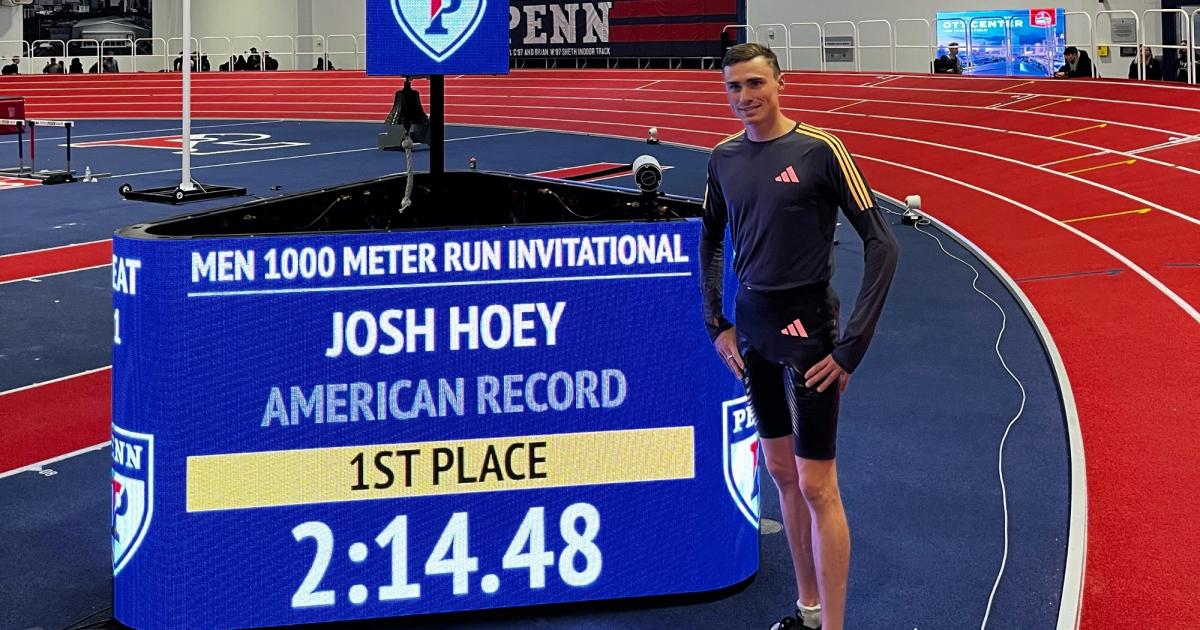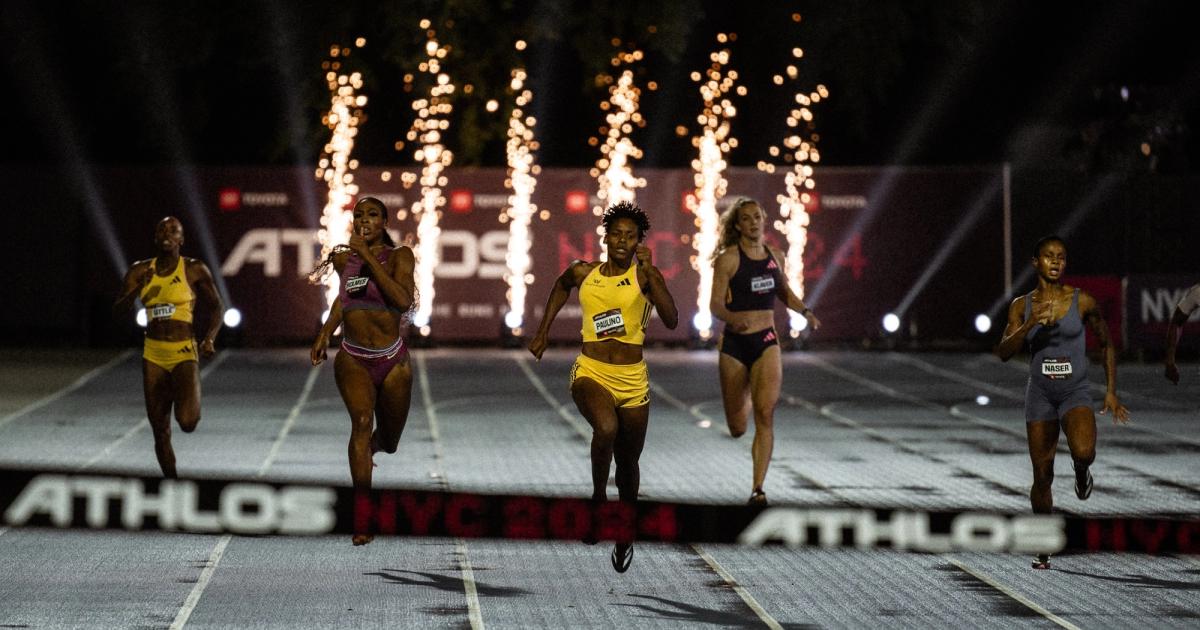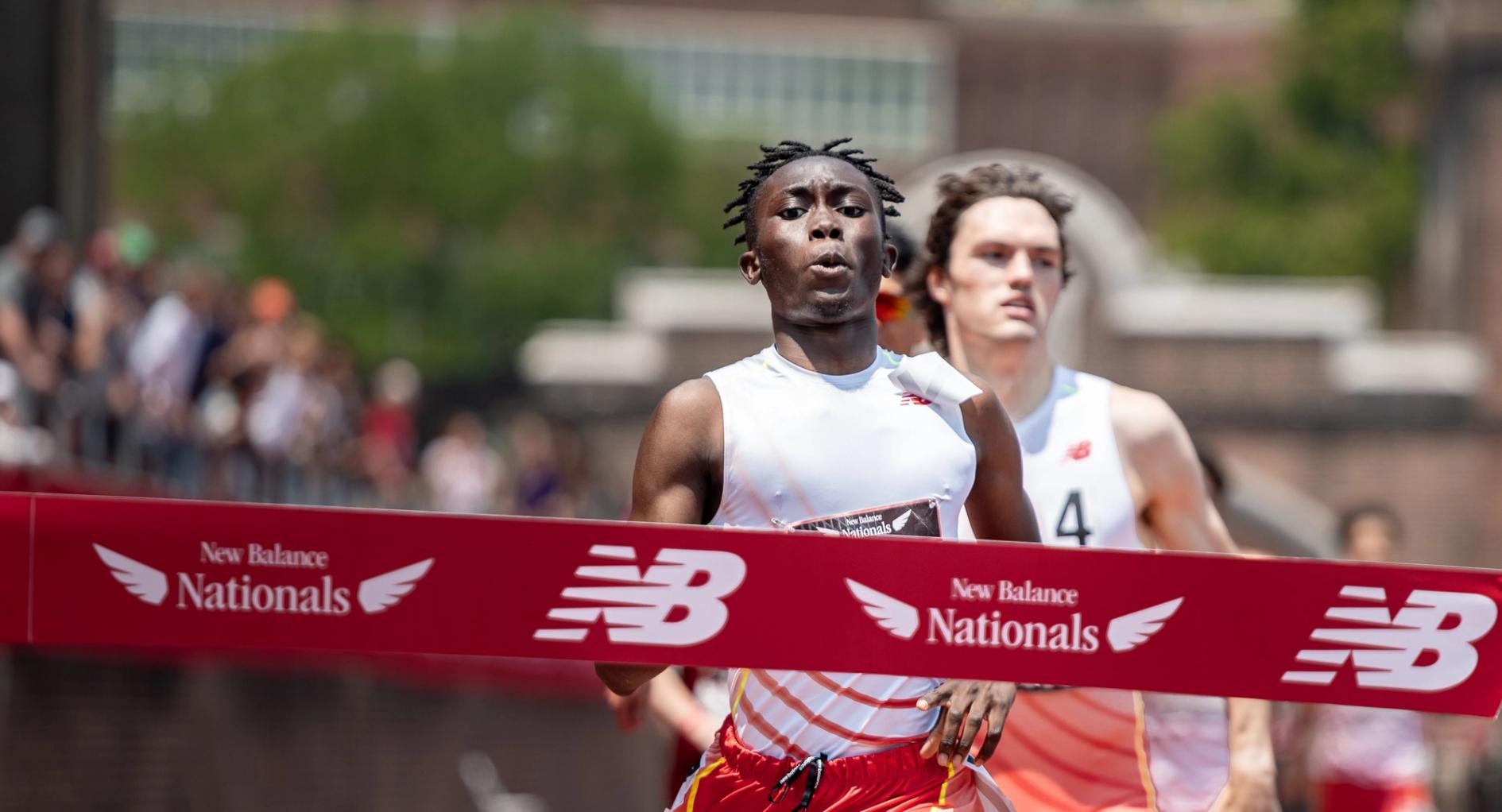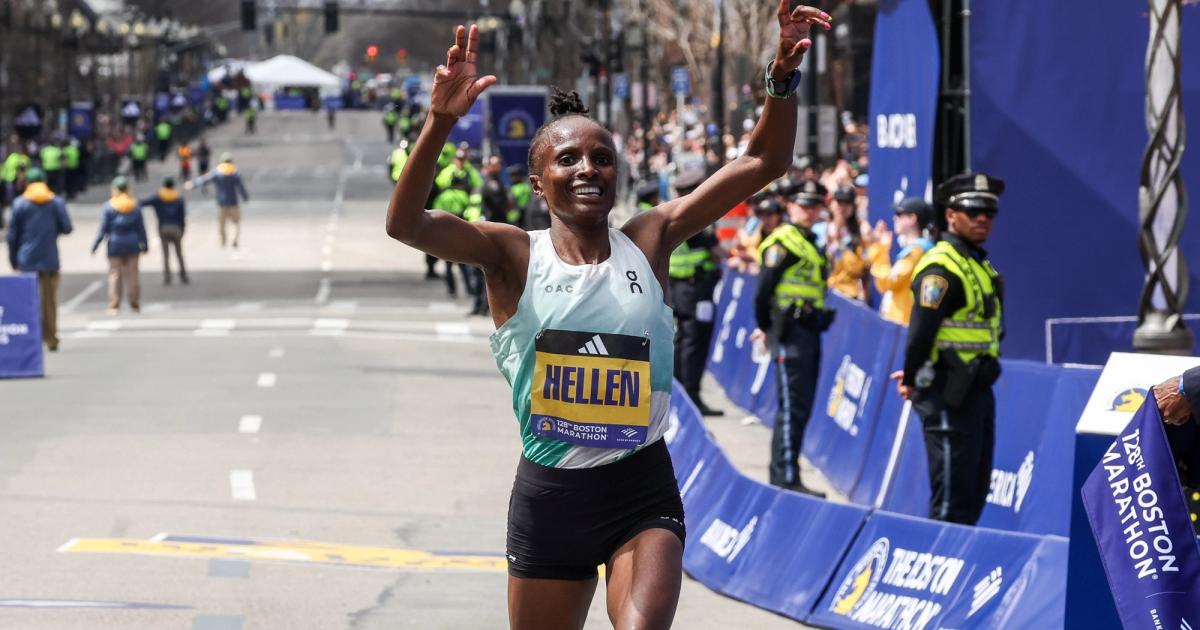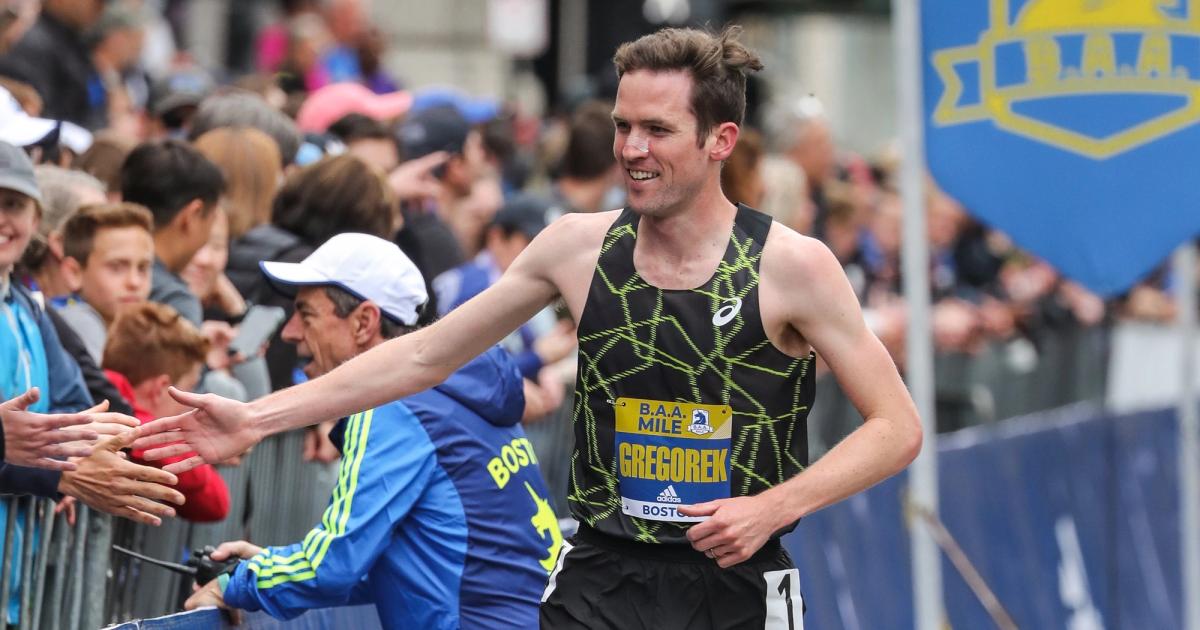By David Melly
January 29, 2025
It’s been a big couple weeks for the 1000m.
As the 2025 season continues to unfurl across the U.S., the ol’ five-lapper got some serious shine as a wide range of athletes took their crack at one of the signature off-distances of the indoor circuit. First, Sinclaire Johnson returned to action in her first track race since the 2024 U.S. Olympic Trials with a 2:35.11 win at the oversized Dempsey track in Seattle, good for an asterisked U.S. #6 all-time. The next day, former high school standout Josh Hoey, now 25 and in the midst of a mid-career (late-career?) resurgence, helped christen the University of Pennsylvania’s shiny new indoor facility with an American record 2:14.48 run. Also that Saturday, Georgetown sophomore Tinoda Matsatsa improved his own NCAA record by over a second in the event with a 2:16.48.
And then last weekend, Olympic 1500m champ Cole Hocker opened up his season (officially, not counting a rabbit job the week prior) with a 2:18.22 victory in his home-base track at Virginia Tech. Hocker’s time was the least impressive of this roundup, but it’s a clear statement that he and training partner Cooper Teare are ready to take on the indoor season with a healthy dose of their usual shake-and-bake action.
That’s a whole bunch of medium-to-big middle-distance names from a range of backgrounds who had a nice time taking the 800’s quiet, awkward cousin out for a date. And unlike the 1500m, which is rarely contested indoors this side of the Atlantic, most of those meets (and plenty others) offered the 800m as an option for entry. For the collegians in the mix, the shorter event is your only ticket to NCAAs, and for the pros, you can’t lock in an early World qualifier. So why does everybody seem to love racing the 1K?
Part of it has to be the time of year and placement in the season. For most folks, January is a time for busting the rust, not sharpening the razor’s edge. So for the sake of confidence building (and not wanting to compare times with your August 2024 self), you may want to take on an off-distance just to start getting your sea legs back. And if you are pretty fit and planning on targeting USAs or World Indoors, you may not want to show all your cards to the competition just yet.
Another factor has to be embracing some old-fashioned indoor track culture. Depending on your home state, you may have grown up racing exclusively the 55m, 300m, 600m, 1000m, mile, ad 2 mile distances indoors, and there’s a certain hard-nosed nostalgia for the idea that indoor is its own unique sport, with events and dynamics distinct from its occasionally humid, often windswept counterpart. 800s are for June, baby! Leave that January-800m-nonsense down in Australia where it belongs—for the time being.
But the final, and perhaps most serious, reason why the 1000m is a pet favorite of many middle-distance specialists is that it’s a really, really good event for working on your weaknesses. A speed-based 800m specialist has to figure out how to hold on for another 30 seconds or so of racing. An aerobic-focused miler has to get their sprint on just to stay in contention before the final lap. And when normal expectations of pace and effort measuring are thrown even a little bit askew, it can create interesting tactical setups perfect for working out every possible championship scenario.
For a runner like Hocker, it also helps load up your arsenal to prepare for what your rivals might throw at you. 2:18 for 1000 meters also happens to be 3:27 1500m pace, and getting through five (indoor) laps of hard effort as controlled and relaxed as possible translates well to hanging in a classic Jakob Ingebrigtsen squeeze-from-the-front race. You could perhaps even argue that a hard final 1000m is also often the key to surviving a championship 5000m and that longer-distance athletes could stand to drop down once in a while.
Regardless of your own personal reason for toeing the line, contesting a hard 1000m in January is as much a training tool as it is a race unto itself, and there’s little downside to giving it a shot. So whether you’re gunning for gold in Tokyo or just trying to find the extra one percent for a mile PB, don’t overlook the 1K as you plan out your racing schedule.
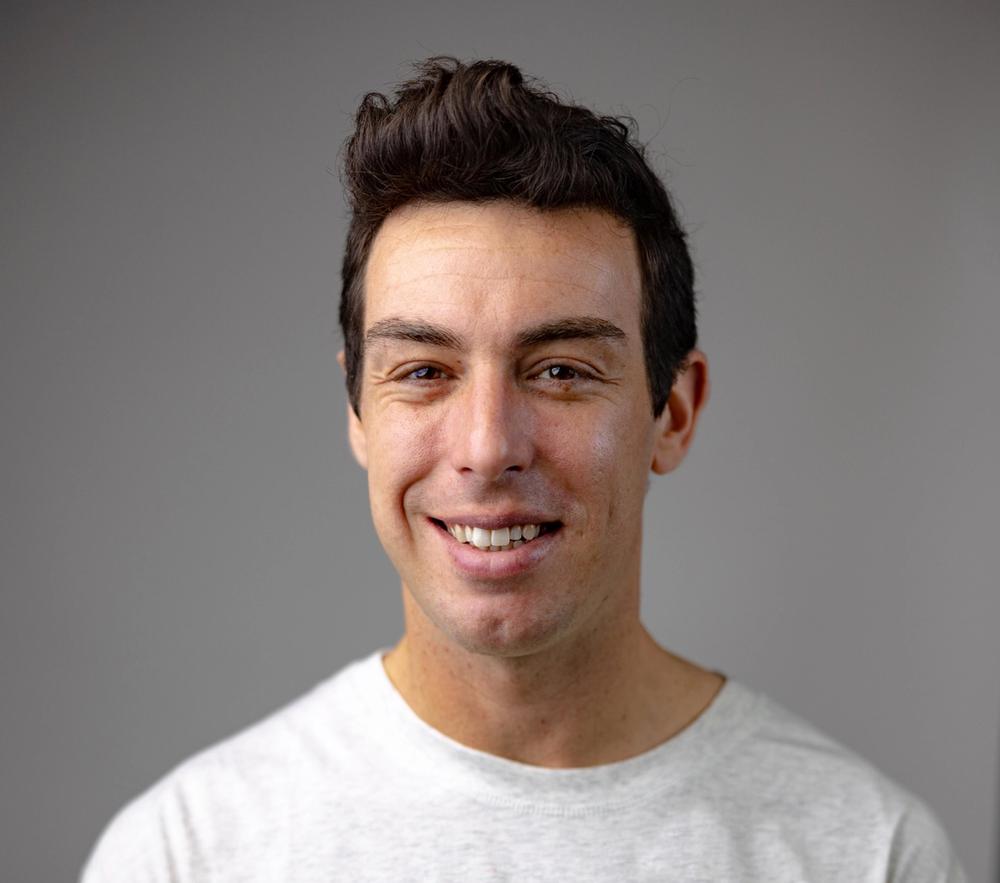
David Melly
David began contributing to CITIUS in 2018, and quickly cemented himself as an integral part of the team thanks to his quick wit, hot takes, undying love for the sport and willingness to get yelled at online.
